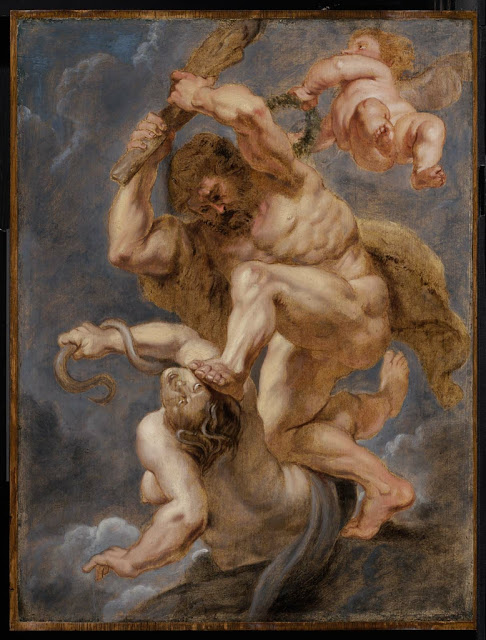 |
| attributed to Gabriel Metsu Death of Sophonisba before 1667 oil on panel Museum of Fine Arts, Boston |
 |
| Emanuel de Witte Kitchen Interior ca. 1660-70 oil on canvas, mounted on panel Museum of Fine Arts, Boston |
 |
| Hendrick Gerritsz Pot Woman seated at a Table (Vanitas) ca. 1635-40 oil on panel Museum of Fine Arts, Boston |
"GRADATIONS OF LIGHT – In general, Renaissance artists represented forms and faces in a flat, neutral modeling light (even Leonardo's shading is of a standard kind). They represented the idea of light, rather than showed how humans perceive light. Artists such as Rembrandt discovered gradations of light and dark as well as degrees of differences in pose, in the movements of facial features, and in psychic states. They arrived at these differences optically, not conceptually or in terms of some ideal. Rembrandt found that by manipulating the direction, intensity, and distance of light and shadow, and by varying the surface texture with tactile brushstrokes, he could render subtle nuances of character and mood, both in individuals and whole scenes. He discovered for the modern world that variation of light and shade, subtly modulated, can be read as emotional differences. In the visible world, light, dark, and the wide spectrum of values between the two are charged with meanings and feelings that sometimes are independent of the shapes and figures they modify."
– Fred S. Kleiner, from Gardner's Art Through the Ages (Boston: Wadsworth, 2014)
 |
| Pieter de Hooch Interior of a Dutch House ca. 1680 oil on canvas Museum of Fine Arts, Boston |
"Pieter de Hooch," writes Dr. Bredius, "has two styles. The pictures in his first manner, most of which were painted before 1665, are especially bright and luminous. After 1665 he seems to have preferred to leave a large part of his compositions in obscurity, showing the bright light of the sun outside only through some open door or window in the background, and the contrasts between light and shadow became more and more marked as he continued, until in the pictures painted toward the end of his life they are pushed to an extreme, and the figures in the dense shadows become sometimes even difficult to distinguish."
– from the Masters in Art Series of Illustrated Monographs, published monthly by Bates and Guild Company, Boston (1902)
 |
| Daniel Jansz Thievaert The Laborer of Gibea offering Hospitality to the Levite and his Wife ca. 1640-45 oil on canvas Museum of Fine Arts, Boston |
 |
| Francisco de Zurbarán St Cyril of Constantinople (altarpiece panel) ca. 1634 oil on canvas Museum of Fine Arts, Boston |
 |
| Francisco de Zurbarán St Peter Thomas (altarpiece panel) ca. 1634 oil on canvas Museum of Fine Arts, Boston |
 |
| Peter Paul Rubens The Sacrifice of the Old Covenant (sketch for tapestry) ca. 1626 oil on panel Museum of Fine Arts, Boston |
 |
| Peter Paul Rubens Mercury and Sleeping Herdsman (study for the ceiling of the Banqueting House,Whitehall) ca. 1632-33 oil on panel Museum of Fine Arts, Boston |
 |
| workshop of Peter Paul Rubens Hercules as Heroic Virtue overcoming Discord (study for the ceiling of the Banqueting House,Whitehall) ca. 1632-33 oil on panel Museum of Fine Arts, Boston |
 |
| Pieter Cornelisz van Slingelandt Portrait of Johan van Musschenbroek and his Wife ca. 1685-88 oil on panel Museum of Fine Arts, Boston |
 |
| Eglon van der Neer Portrait of a Man and Woman in an Interior ca. 1665-67 oil on panel Museum of Fine Arts, Boston |
 |
| follower of Anthony van Dyck Portrait of a Man with an Armillary Sphere ca. 1630-50 oil on canvas Museum of Fine Arts, Boston |
 |
| Adam Bernaert Vanitas Still Life ca. 1665 oil on panel Walters Art Museum, Baltimore |